Bottle up those excess oranges and enjoy them throughout the year with this old fashioned Orange Cordial Recipe.
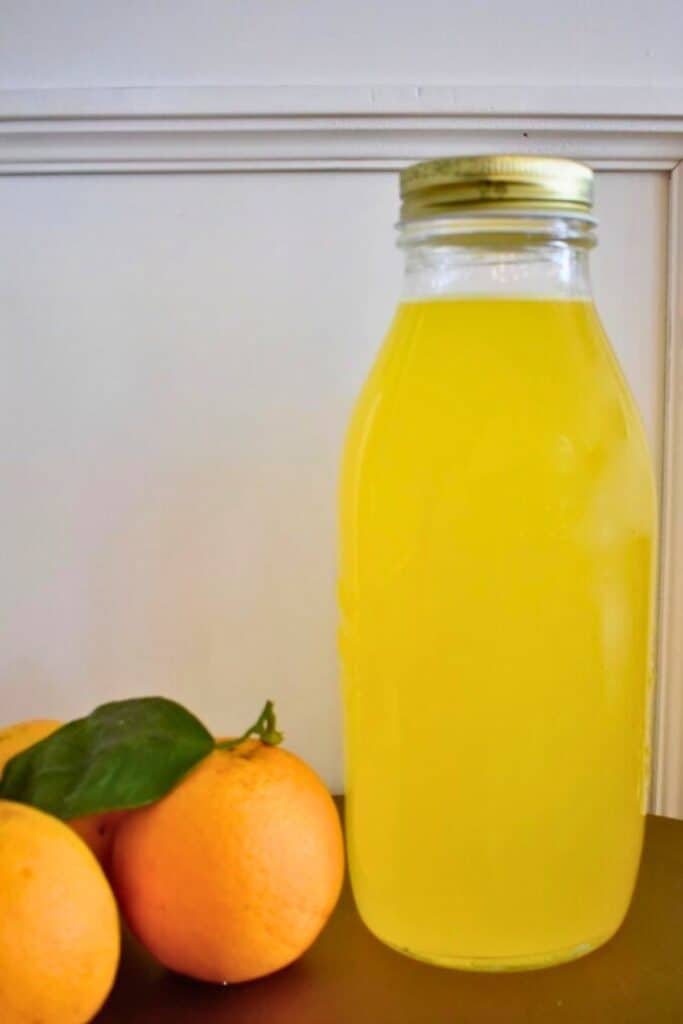
Forget the supermarket stuff. It's so easy to make your own homemade orange cordial and you simply won't beat the flavours of homemade cordial.
What you'll need
This recipe requires 4 or 5 small oranges, caster sugar, tartaric acid and water. It produces about one litre of cordial, so adjust the recipe according to how many oranges you have and how much cordial you'd like.
TIP: You can use citric acid instead of tartaric acid, but keep in mind that while both are used as preservers, tartaric acid has a sharper and more biting sour taste.
TIP: If you're having trouble finding tartaric acid, in Australia you can find stockists listed on the McKenzie's website.
You'll also need a muslin cloth to strain the cordial before bottling all that sweet orange-y goodness.
Keep scrolling for ingredient quantities at the end of this post in the recipe card.
How to make Orange Cordial
Start by juicing the oranges and then add the tartaric acid to juice. Stir to combine.
TIP: Don't discard the orange skins as you will also use the zest
Next, add the sugar and water to a saucepan, along with the zest. Stir over medium-high heat until the sugar dissolves and the mixture just starts to simmer. This should take about 5 minutes. Remove mixture immediately as it starts to simmer.
Allow this sugar mixture to cool for about 10 minutes and then pour over orange juice and leave for 15 minutes to cool.
Strain the cordial using a muslin cloth. Pour into a sterilised bottle and place cap on bottle. Allow to cool.
Storing and enjoying your cordial
Your cordial should keep in the fridge for up to a few months.
It could also be bottled for shelf storage, though you will need to rely on your own research and knowledge of bottling and preserving.
Enjoy Orange Cordial mixed with water or soda water, using 1 part cordial to 4 or 5 parts water. You can also use it in cocktails. Cheers!
Love homemade cordial?
Explore more of Nana Ling's old-fashioned cordial collection:
Made this recipe and love it? Please take a moment to rate the recipe and leave a comment below. It’s such a help to others who want to try the recipe. (And it really makes my day to hear how Nana Ling's recipes are being made, shared and loved all around the world! - Libby x)
For more fun and deliciousness in the kitchen, follow along on Facebook, TikTok and Pinterest, and subscribe for new posts via email.
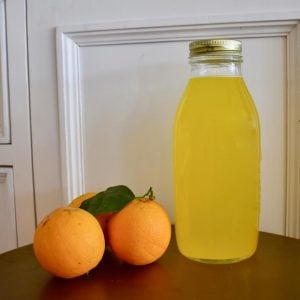
Orange Cordial
Ingredients
- 300 ml fresh orange juice (4-5 small oranges, 3-4 larger oranges)
- 1 ½ teaspoons orange zest
- 2 teaspoons tartaric acid
- 2 ½ cups caster sugar
- 2 cups water
Instructions
- Add tartaric acid to juice and stir to combine.
- Add sugar and water to a saucepan, along with the zest, and stir over medium-high heat until the sugar dissolves and the mixture just starts to simmer. This should take about 5 minutes. Remove mixture immediately as it starts to simmer.
- Allow sugar mixture to cool for 10 minutes and then pour over orange juice and leave for 15 minutes.
- Strain mixture using a muslin cloth. Pour into a sterilised bottle and place cap on bottle.
- Allow to cool and store in the pantry for up to 12 months. Or pop it in the fridge to enjoy immediately.
- Enjoy mixed with water or soda water, using 1 part cordial and 4 or 5 parts water.

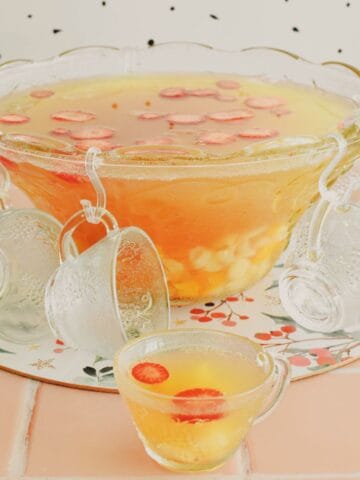
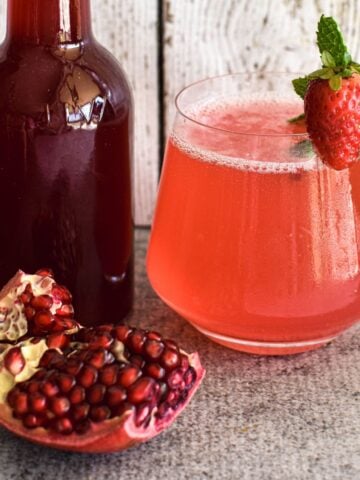
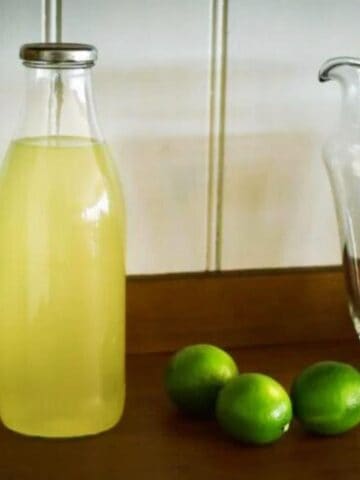
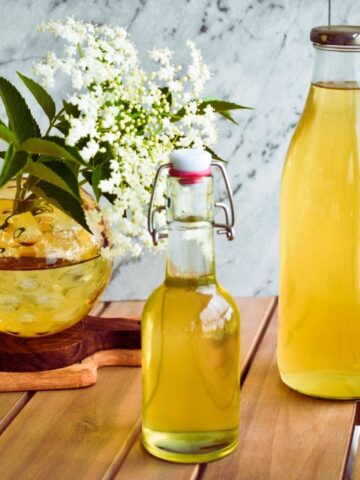
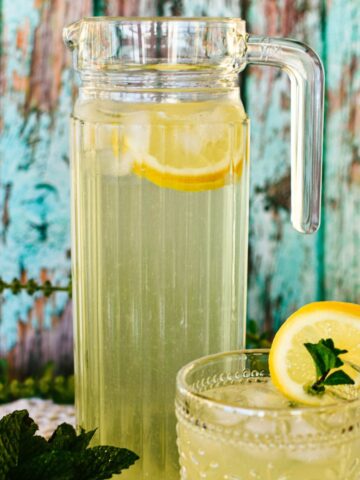
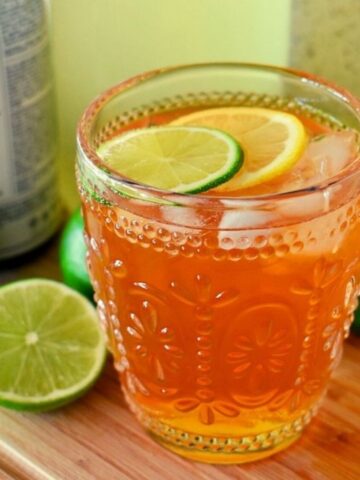
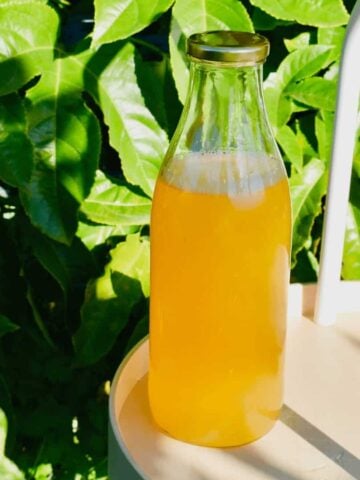
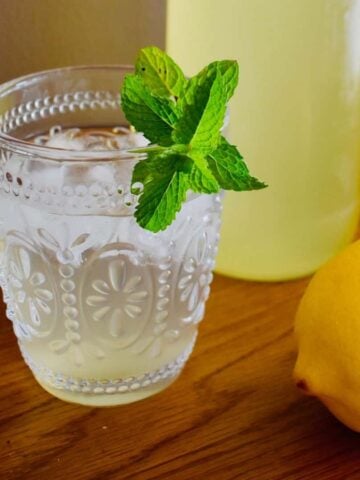
Lucy
I'm unable to find tartaric acid in stores at the moment. Can I substitute with citric acid?
Libby Hakim
Hi Lucy. Yes, citric acid is the best substitute. There's also a page which tells you where you can buy tartaric acid if you're in Australia: https://www.mckenziesfoods.com.au/product/mckenzies-tartaric-acid/ Thanks! Libby
Lucy Stark
@Libby Hakim, thank you!! I found it at foodland 🙂
Libby Hakim
Awesome!! Have fun making your cordial 🙂
Jason Harrow
I have a large orange tree that is dropping fruit, but the fruit isn't sweet enough to eat until September-October. I have made all the marmalade i care to and i was wondering if these windfall oranges would be suitable for your orange cordial recipe?
Libby Hakim
Absolutely! Just juice them up and follow the recipe when you're ready. The Orange and Poppy Seed Muffins recipe is also a winner.
Ilks
I have freshly squeezed orange juice but don't have the rinds anymore - should I adjust sugar or amend anything if making cordial and not using zest?
Libby Hakim
Hi! No, it just won't be quite as strong in terms of flavour. The recipe will still work, though.
Janelle
Brilliant! My husband loves this cordial, "better than the supermarket" he says.
Libby Hakim
Awesome, thanks for the review and rating Janelle! My husband also notices when we run out of this cordial 🙂 Happy cooking!
Bailee
I make this fresh all the time but have never stored it long term. Does the cap need to seal? And what else can I use instead of Tartaric acid?
Libby Hakim
Hi! If you seal the cap properly it will store better/longer. You can substitute citric acid, however I recommend Tartaric acid as included in the original recipe. It is a better preserver and will also enhance flavour more, from what I understand. I avoid making suggestions re: how long cordials will last as this depends on so many factors. I personally take a risk averse approach and try to refrigerate my cordials within a couple of months or straight away.
Maurice
Thanks, how long to is the shelf life for room temperature and refrigerated
Maurice
How do you make a larger batch of cordials and adding tartaric or citric acid measurements with it
Libby Hakim
Hi Maurice. If you double the sugar, water and fruit, just double the amount of tartaric acid. Good luck!
Libby Hakim
Hi Maurice. Simply multiply all ingredients by 2x, 3x etc. Good luck!
Jo
Can you make this with a sugar substitute (like stevia, xylitol, erythritol, etc.)?
Libby Hakim
Hi Jo - you could try this however just be aware that the original recipe contains two preservers, the sugar and the tartaric acid. I don't believe sugar substitutes are preservers so you'll just be relying on the tartaric acid.
Jo
@Libby Hakim, thanks, I figured that it might be a problem.
Gabrielle Valodze
Simple and tastes amazing; the taste of freshly picked orange ia lovely. Not full of nasties like the ones on the supermarket shelves.
Libby
Thanks for your review, Gabrielle. I always have Nana Ling's cordial in my fridge now and it's fun to experiment with different fruits. There are a few other flavours on the website. Happy cooking!